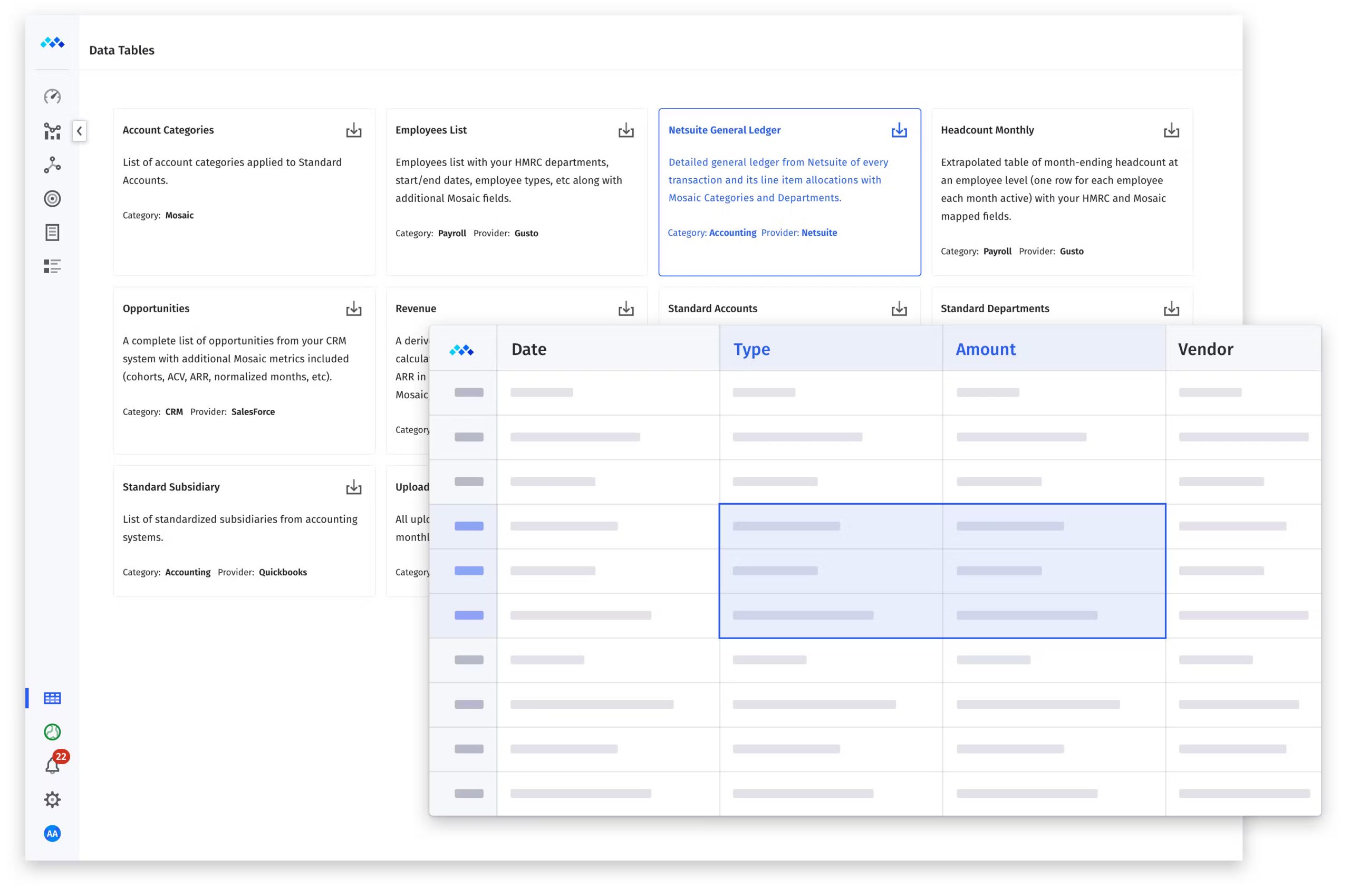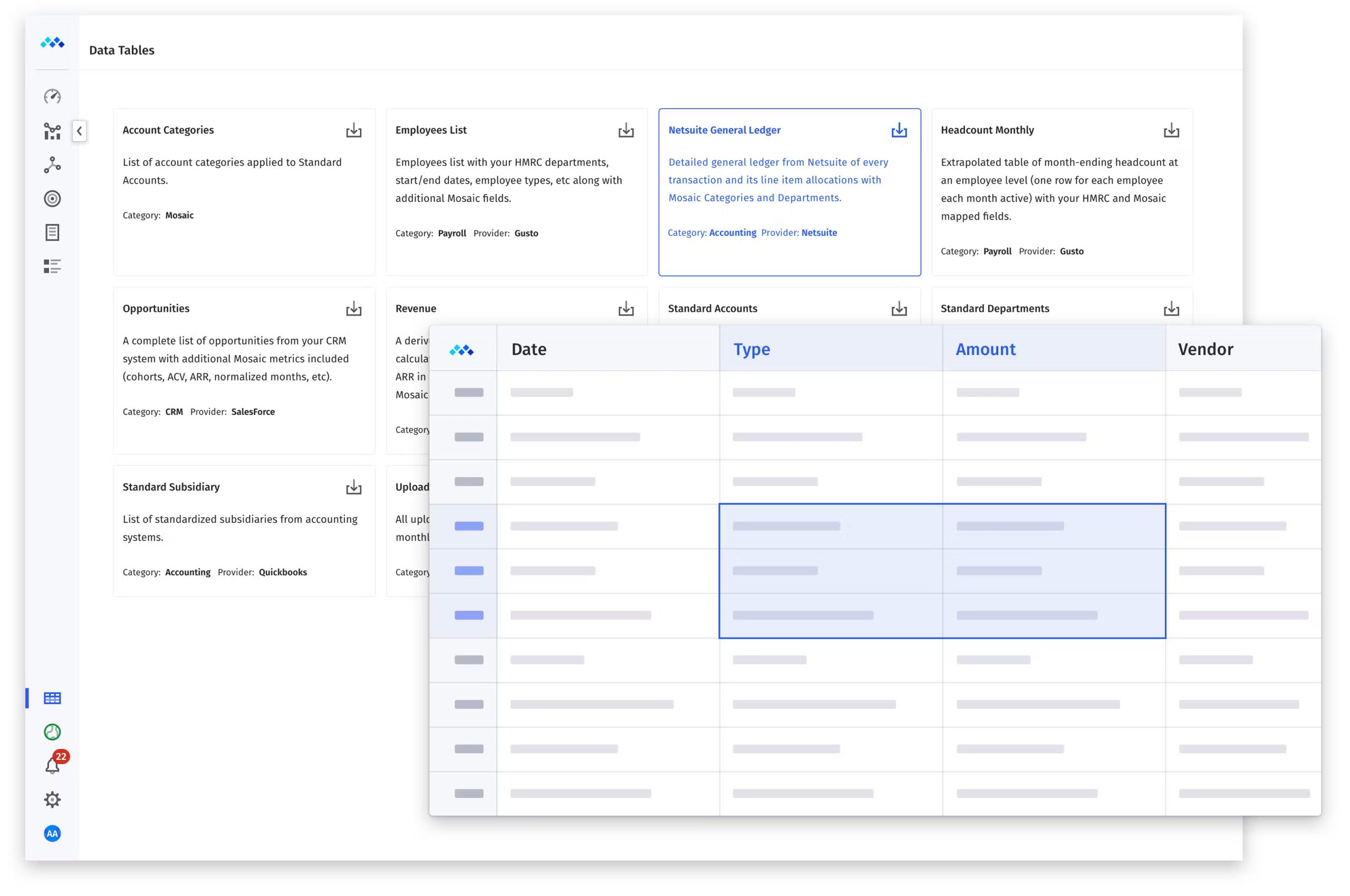
Mosaic raises $26M to help inform companies’ financial decisions
Typical financial planning and analysis teams spend the bulk of their time on data-gathering and administering processes. That’s because they often have to deal with cumbersome systems and software tools, leaving little time to focus on generating insights that might drive business growth.
At least, that’s according to Bijan Moallemi, the co-founder of Mosaic, a startup building a platform that attempts to centralize operational data from across an organization. Mosaic today announced that it raised $26 million in a Series C funding round led by OMERS Ventures with participation from Founders Fund, General Catalyst, and Friends and Family Capital, bringing its total raised to $73 million.
Moallemi co-launched Mosaic with Joe Garafalo and Brian Campbell, who he met in 2012 at Palantir, the big data analytics company, while helping to build Palantir’s finance team.
“Tasked with supporting business decisions for a company — Palantir — in hypergrowth, we were frustrated by the slow speed, high complexity and inefficiencies of existing tools in the market,” Moallemi told TechCrunch in an email interview. “Realizing that the role of the CFO had grown in scope, but our toolkit had not, we set out to build a platform that would address the technical challenges modern-day finance and business teams face.”
Moallemi describes Mosaic as a “real-time planning and analytics” platform. Stripping out all that marketing jargon, Mosaic provides dashboards, modeling and data visualization tools geared toward financial planning use cases, allowing users to quickly share insights with stakeholders.

Image Credits: Mosaic
With Mosaic, companies can gain a better sense of when to execute on their plans, Moallemi says, like when to expand their sales teams or raise another round of funding. Users can create department or executive views for due diligence and go-to-market analysis, providing a unified — but custom-tailored — source of truth.
“In the past, implementing a legacy FP&A platform took months, bogging down the IT department with significant demand for engineering resources,” Moallemi said. “We’ve architected Mosaic to eliminate the need for IT resources in implementation or maintenance … Instead of needing IT to respond to requests for data, business users can get real-time insight into the metrics that impact their daily activities.”
Mosaic, who counts Emerge, Sourcegraph and Drata among its customers, claims business has “tripled” each year since its founding in 2019 and that the burn rate — the rate at which it’s spending money in excess of income — is steadily decreasing. Moallemi credits the pandemic with the growth, in part, as well as the current general economic uncertainty.
There’s truth to what he says. According to a recent survey from Capterra, the majority (73%) of financial professionals plan to spend more on software this year than they did in 2022. They listed managing a hybrid workplace, security concerns and cyberattack risks as their top motivators.
“During the pandemic, the rise of remote work created more demand for collaborative workflows in finance,” Moallemi said. “Macro slowdowns require everyone to do more with less. And the answer to that is implementing technology that increases the amount of work people can do without forcing the company to add headcount.”
In the near term, Mosaic, which has 80 full-time employees, plans to build out the platform’s AI capabilities and introduce tools along the lines of its recently-launched Metric Builder, which lets customers create, analyze and plan custom financial metrics. Added Moallemi: “We’ll continue to expand our planning and analysis features while also making AI a core part of the platform to empower this generation of agile, strategic finance leaders.”

